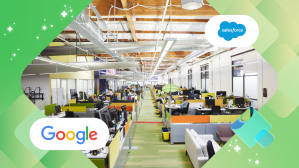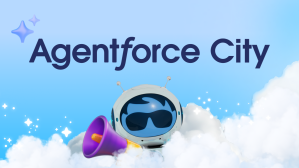Key Takeaways
- AI fluency, or the ability to understand and collaborate with agents and other AI tools, is becoming an indispensable skill in the age of the Agentic Enterprise.
- There are four components of AI fluency: technical communication, critical evaluation, adaptive management, and human-AI synthesis.
- AI fluency allows workers to streamline their workflows and work alongside agents to optimize outcomes, and requires full immersion into AI systems and tools and is an ongoing learning process that can be aided by taking courses on Trailhead.
Picture this scenario: A content marketing team is discussing the best way to improve performance. But instead of debating headline variations or engagement, they spend most of the meeting talking about how to work alongside AI. Which prompts generate the most compelling ad copy? Which AI tool works best to serve customer needs and interpret customer insights? How should an AI agent adjust when its interactions aren’t driving conversions?
Thousands of companies globally are navigating this change — Salesforce among them. We’ve deployed over 100 AI agents through our Agentforce platform across customer service, security, and yes, marketing.
This partnership with AI has reshaped how we approach daily tasks. And what we’ve learned is that the technical complexity of working with AI isn’t the biggest challenge. The real hurdle is learning how to use these systems in a way that produces the desired results. It’s like learning to communicate in a new dialect — even if you’re speaking a familiar language, nuances and context can mean the difference between success and failure.
But here’s the good news: Teams don’t need to hire AI specialists with a Ph.D. in machine learning to work effectively with AI and AI agents. Just as spreadsheet software made data analysis accessible to non-statisticians, AI tools are designed to be intuitive enough for any professional to master. It’s a simple matter of AI fluency — the ability to effectively “speak AI.”
What is AI fluency?
AI fluency is the ability to effectively understand, communicate with, and collaborate alongside artificial intelligence systems to achieve optimal outcomes.
Just as people can’t become fluent in a language without immersing themselves in it, today’s workers can’t develop AI fluency without immersing themselves with these tools. The more confident they are with various AI systems, the better prepared they’ll be to apply them effectively in any professional context.
Here are four key characteristics of AI fluency:
Technical Communication: AI systems use natural language, but that doesn’t mean every natural-language prompt will get the same results. Successful communication requires understanding key terminology and skills — like knowing the difference between fine-tuning and prompt engineering, when to adjust temperature settings versus provide more context, and how to structure queries for different model types.
Critical Evaluation: English students can write papers, but only teachers can grade them. Similarly, AI fluency requires the ability to understand how different agents and models perform, assess their outputs, and determine which tasks are most appropriate for them to tackle. This fluency develops through hands-on experience.
Adaptive Management: Language is always changing, and AI is changing even faster. A customer service agent may gain new analytical capabilities overnight, or a documentation tool may develop better code-generation skills. Staying fluent in AI means adapting your approach as new abilities emerge.
Human-AI Synthesis: AI excels at processing vast datasets, maintaining consistency, and handling routine execution. Humans excel at picking up on context clues, making ethical decisions, solving problems creatively, and taking accountability for outcomes. Together, they produce stronger results than either could alone. For instance, in the legal, medical, or financial fields, humans are legally required to provide expertise and oversight to any automated advice. But most fields will benefit from the ability to weave AI reasoning together with human insight.
Take our customer 1-800Accountant. During tax season, AI agents handle routine inquiries about filing deadlines and basic procedures while human experts tackle personalized financial advice and complex tax situations. This human-agent partnership allows for better results for both the company and its customers.
Putting fluency to work
So how do you build AI fluency?
Trailhead, Salesforce’s free online learning platform, offers one option, with tutorials designed to make AI approachable for professionals at every level. It also includes hands-on practice with real tools to build genuine fluency, whether exploring basic AI concepts through formal training, experimenting with the systems an organization already uses, or trying AI tools for personal projects.
The goal isn’t to become an AI expert overnight. It’s to develop enough fluency that when your organization starts deploying these systems — and it will — you’re not learning from scratch. You’re building on skills you’ve already developed.
Your department won’t be an exception. As AI adoption accelerates, developing fluency now means you’ll be ready for whatever comes next.
Go deeper:
- Get started in AI or improve your AI skills with Trailhead
- Become an Agentblazer to successfully deploy Agentforce at your company
- Read why AI literacy can build a future-ready workforce




















